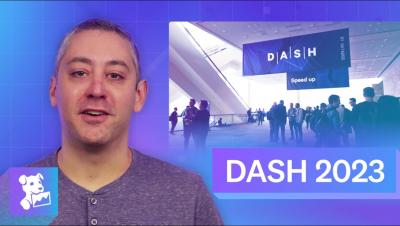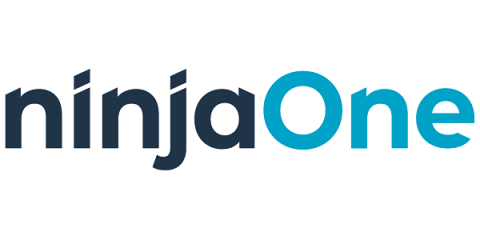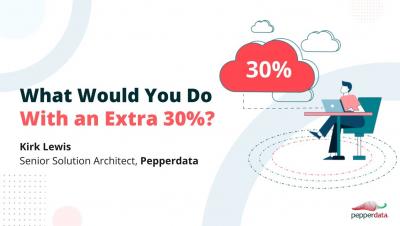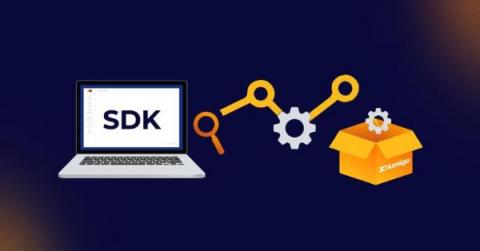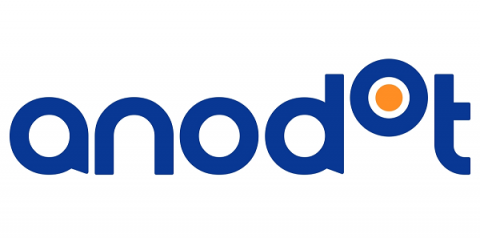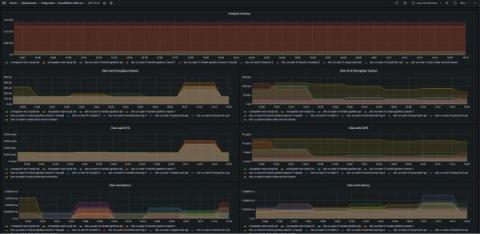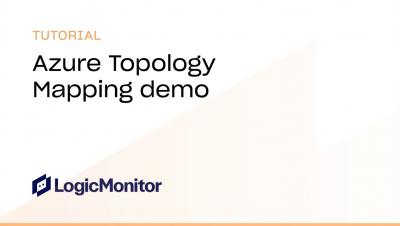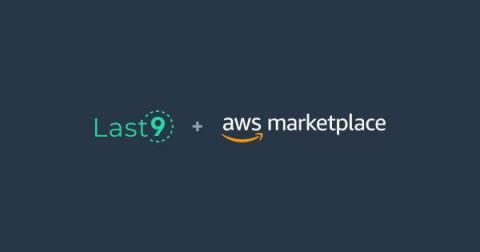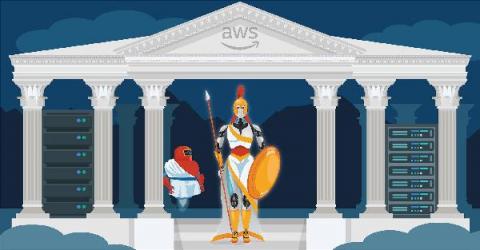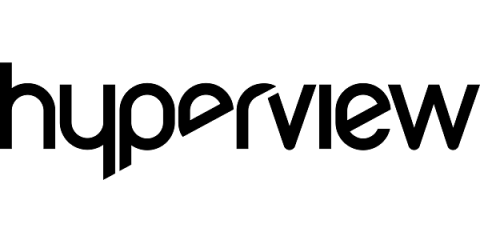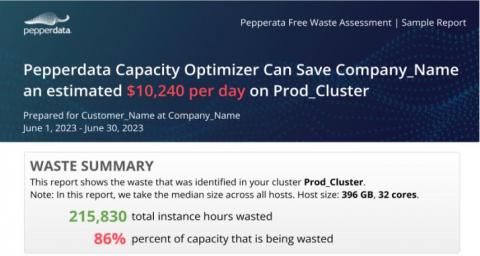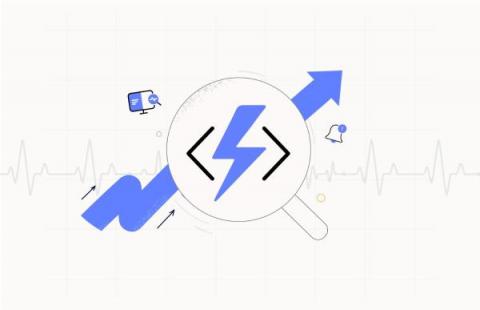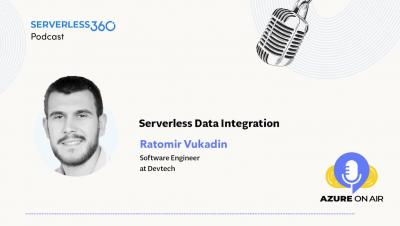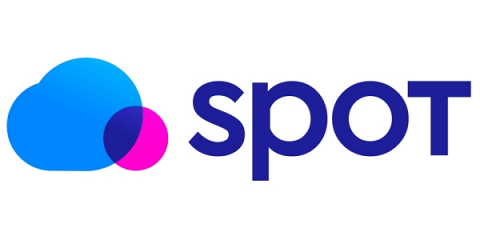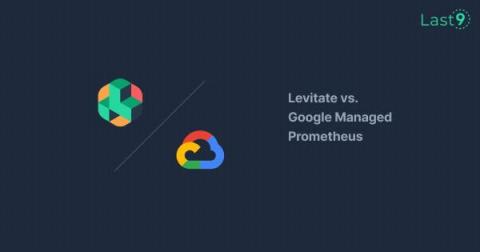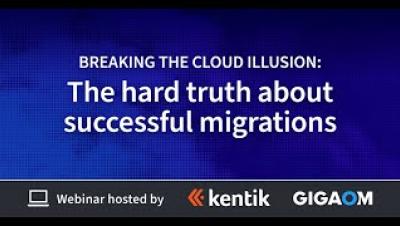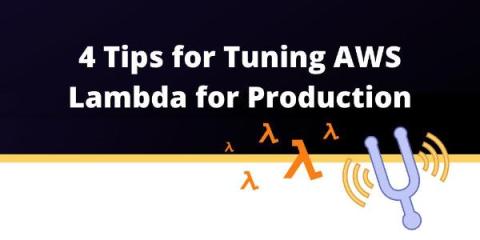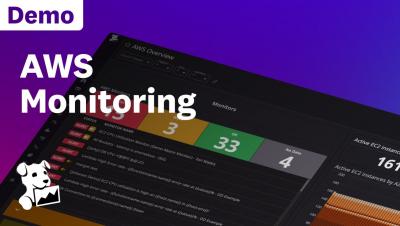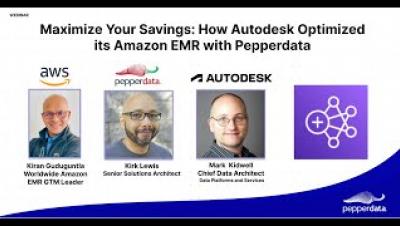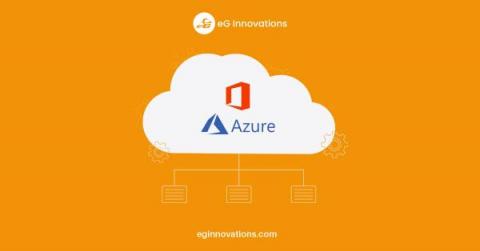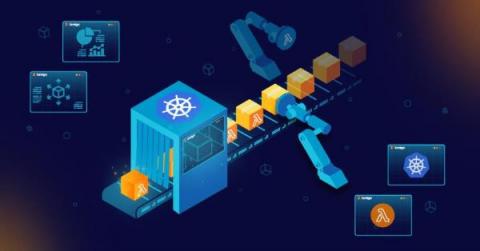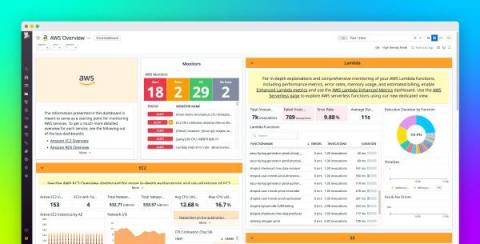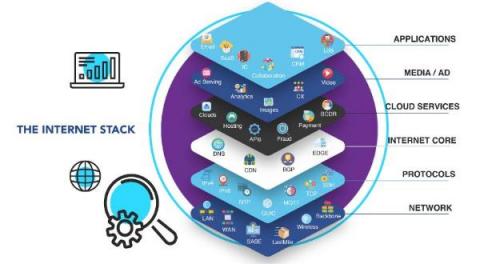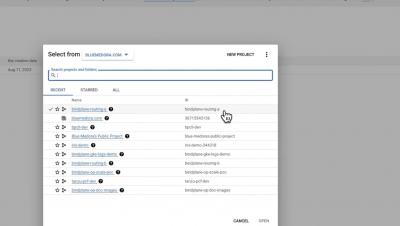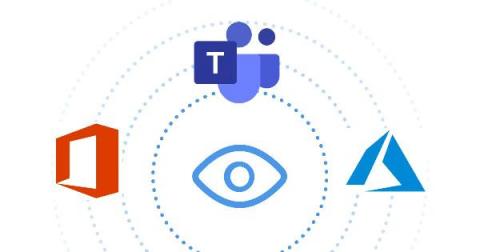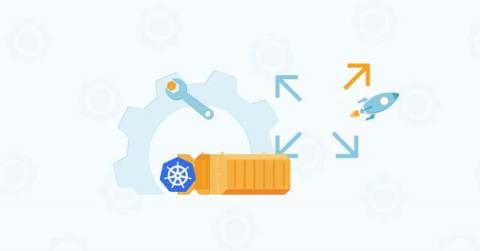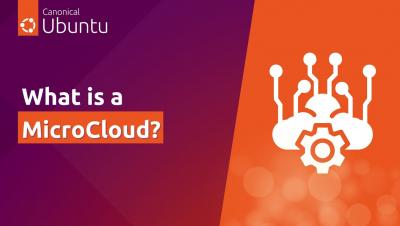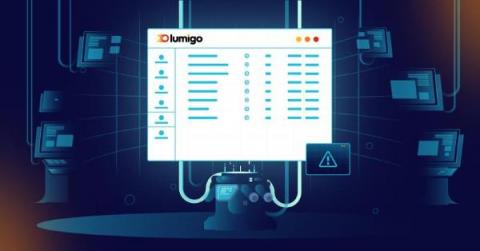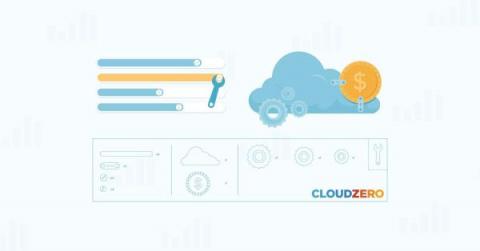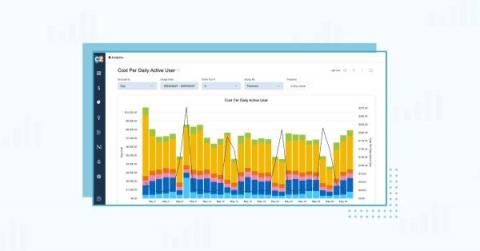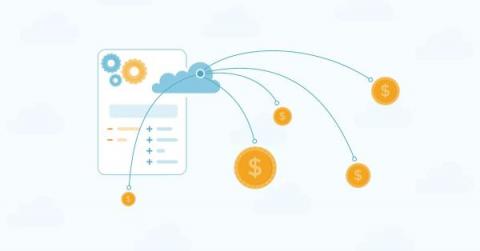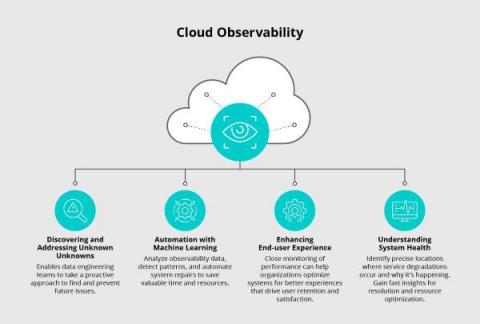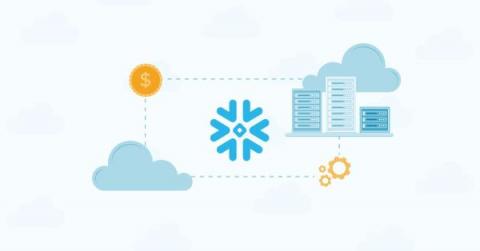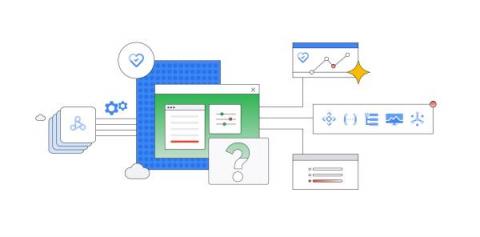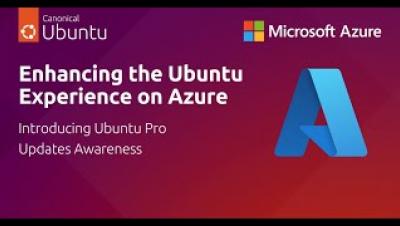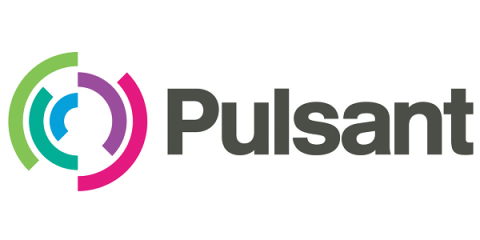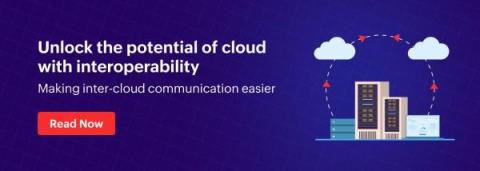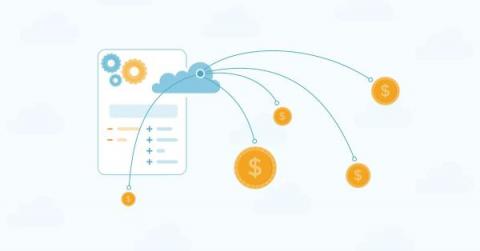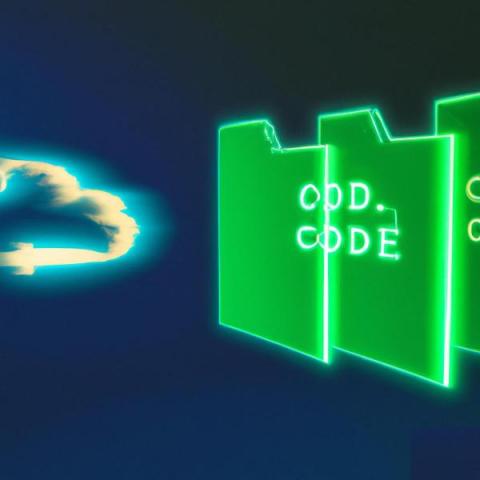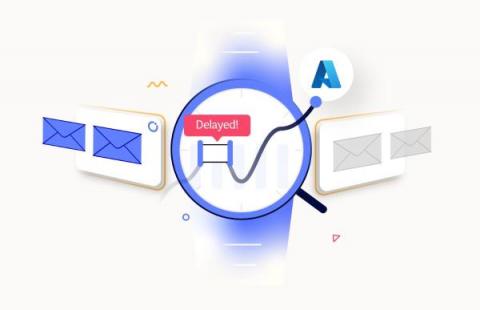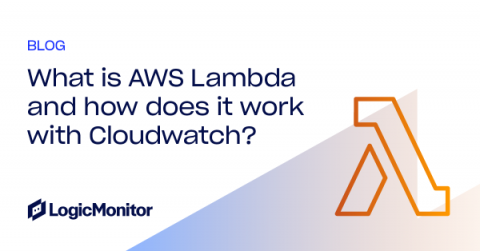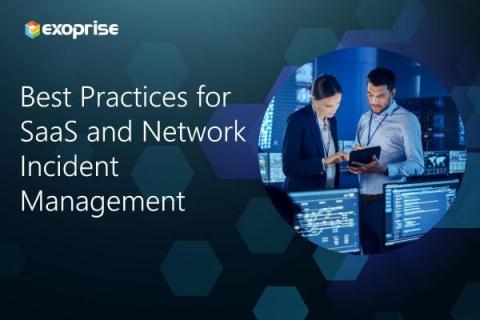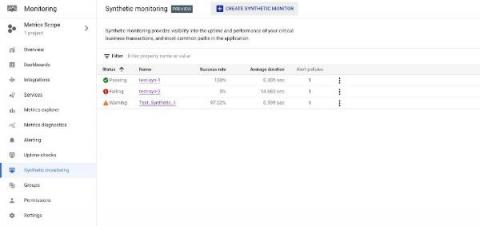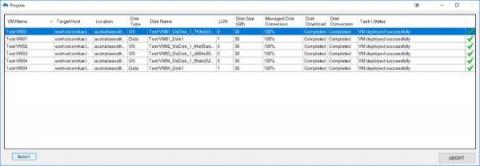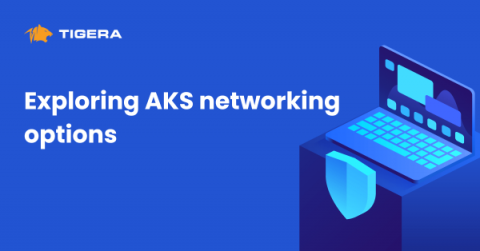Operations | Monitoring | ITSM | DevOps | Cloud
August 2023
Monitor Google Cloud Vertex AI with Datadog
Vertex AI is Google’s platform offering AI and machine learning computing as a service—enabling users to train and deploy machine learning (ML) models and AI applications in the cloud. In June 2023, Google added generative AI support to Vertex AI, so users can test, tune, and deploy Google’s large language models (LLMs) for use in their applications.
Shift Left Monitoring: A Pathway to Optimized Cloud Applications
I recently worked on a customer project to migrate an in-house application to the cloud, using a shift-left monitoring and testing strategy. The original application was developed with LAMP architecture and was being migrated to Spring Boot to modernize it and then run it on the cloud. I was fortunate to be part of the conversation during the day-0 talks. Not all IT managers do this.
The Power of VMware CLI
Command Line Interface (CLI) for VMware is not just a feature but a cornerstone for effective virtualization management. Think of it as the hidden trapdoor that takes you straight to the control room of a spaceship. It’s less fancy than the graphical user interface (GUI), but it gets you direct access to the nuts and bolts of your VMware environment.
This Month in Datadog: DASH 2023 Recap, featuring Bits AI, Single-Step APM Instrumentation, and more
NinjaOne Delivers Automation Innovations to its Cloud-Native IT Management Platform with its Summer 2023 Release
Azure Service Bus Dead-Letter Queue Monitoring
Getting started with RabbitMQ
RabbitMQ is an open-source message broker software that facilitates communication and data exchange between various components of distributed applications. Acting as an intermediary, RabbitMQ enables different software systems, services, and devices to exchange information in a seamless and efficient manner. It follows the Advanced Message Queuing Protocol (AMQP), a standardized communication protocol designed for robust and scalable messaging.
Feature-Based Pricing: A Guide To Per Feature Pricing in SaaS
How Pepperdata Capacity Optimizer Next Gen Can Save 30% Off Your Cloud Bill
How Technology Empowers Engineering Companies for Success
Data at the edge: Meet modern data processing demands with edge computing
We’ve all experienced latency in some form. It’s unfortunately something we’re all too familiar with. We’ve even gone so far as to accept it as a regular albeit undesirable part of the user experience. Yet despite various steps taken over the years, it still exists and is as disruptive as ever.
Azure Files: Latest Enhancements and Features
The Azure Files update in 2023 introduced Azure Active Directory support for REST API, enabling SMB file share access with OAuth authentication. This advancement improved the scalability of Azure Virtual Desktop by increasing the root directory handle limit from 2,000 to 10,000. Additionally, the public preview of geo-redundant storage for large file shares enhanced capacity and performance, while the Premium Tier now guarantees a 99.99% uptime SLA for all premium shares.
Building, deploying and observing SDKs as a Service - Part 3
Welcome back to the final installment in our three-part series on building your own SDK generator.
Tech Trends: Discover 5 Cutting Edge Technologies Shaping Our Future
2023 Cloud Cost Management Platforms: A FinOps Tools Competitive Analysis
Managing cloud costs has become a must for FinOps-focused businesses. Gotta keep a close eye on those expenses! So, what is the best way to do it? Find a platform that can help you get cost visibility and catch any cloud costs anomalies before they turn into a money waste! With tons of FinOps tools, how do you figure out which one suits your needs? And what exactly should you be looking at? We get it! There’s much to consider when picking the best platform to get those cloud cost insights.
Centralize AWS observability with Grafana Cloud
If you’re using AWS, you’re almost certainly using Amazon CloudWatch to collect and analyze observability data from your favorite AWS services. And while AWS remains the most broadly adopted cloud platform, not every company uses it exclusively, which means you need a tool that gives a centralized view across all your environments. With Grafana Cloud, you can do just that.
LogicMonitor Azure Topology Mapping Demo
Levitate - Last9's managed TSDB is now available on the AWS Marketplace
Levitate - Last9's managed TSDB is available on AWS Marketplace.
Leveraging Cloud Infrastructure for Remote Work
What Is AWS Athena? Here's Everything You Need To Know
Top Cloud Cost News From This Summer 2023
How to schedule an AzCopy Data Transfer
AzCopy is a command-line utility designed for copying data to and from Microsoft Azure Blob and File storage. It is a very powerful tool provided by Microsoft that helps users to copy and transfer data efficiently and securely. One of the key features of AzCopy is the ability to schedule transfers. Scheduled transfers can be extremely useful in managing data and ensuring that data is moved or backed up at the most appropriate times.
Cloud Repatriation: The Unforeseen Reversal in Cloud Computing Trends
At first glance, this may appear counterintuitive. After all, aren’t public clouds lauded for their scalability, flexibility, and cost-efficiency? However, a closer examination reveals a more nuanced reality. This article delves into the driving forces behind cloud repatriation, helping you determine whether it might be the right fit for your organization.
A complete guide on Azure Integration Services
Cloud Computing Market Size And Key Insights You Need To Know In 2023
How Pepperdata Does What Nobody Else Does
Unlocking Azure Data Factory Transparency with Business Activity Monitoring (BAM)
A complete guide on Azure Functions monitoring
Power Automate Integration for Business Users to Improve Automation Efficiency.
Serverless Data Integration
Implementation Guide and Use Cases for Setting Up API Endpoint Monitoring
Streamlining operations with automation from Spot by NetApp
Azure and VMWare Integration
In today’s rapidly transforming digital landscape, virtualization and cloud computing have become pivotal technologies. Among the leaders in these fields, VMware and Microsoft Azure stand as two monumental names, each carving out unique niches and empowering businesses to reach new heights. The integration between VMware’s virtualization solutions and Azure’s vast cloud services is not merely a technical novelty but a strategic alignment that reshapes the way enterprises operate.
ExpressJS Container Debugging
In recent years, the landscape of application development has experienced a paradigm shift, largely driven by the rise of containerization and microservices architectures. Amid this transformation, Express.js has emerged as a dynamic and versatile framework that stands as a one-stop shop for crafting robust web applications. Its popularity owes much to its minimalist approach, allowing developers to swiftly build APIs and web applications with ease.
CloudZero Vs. Homegrown Cloud Cost Tooling
GCP Managed Service For Prometheus vs. Levitate
A detailed comparison of Levitate and Google Managed Prometheus - Cost, Scale and Ease of Use.
Breaking the Cloud Illusion: The Hard Truth about Successful Migrations
4 Tips for AWS Lambda Performance Optimization
By the end of this AWS Lambda optimization article, you will have a workflow of continuously monitoring and improving your Lambda functions and getting alerts on failures. Serverless has been the MVP for the last couple of years and I’m betting it’s going to play a bigger role next year in backend development. AWS Lambda is the most used and mature product in the Serverless space today and is also at the core of Dashbird.
Introduction to Azure Files Backup
Azure Files is Microsoft’s robust file storage solution, offering the ability to access data seamlessly from various locations using standard protocols. But in the world of IT, where data is the heartbeat of operations, its safety is paramount. That’s where Azure Files Backup comes into play. In a digital era, where data loss can spell catastrophe, backing up your valuable files is more than a best practice; it’s a necessity.
What's New in the Kubernetes 1.28 Second Release
From its humble beginnings, Kubernetes’ growth story continues to be a testament to the power of open-source collaboration, and its current 1.28 second release is certainly no exception. It’s not just a product of ingenious coding but also the sweat and night oil of a global community – from seasoned industry stalwarts to students just making their debut in the open-source world.
AWS Monitoring Demo
Escaping Cloud Jail
Cloud costs are spiraling out of control at companies of all sizes. Here’s how to not let your cloud infrastructure costs handcuff your business.
Maximize Your Savings: How Autodesk Optimized its Amazon EMR With Pepperdata
Azure Monitoring Tool: Here's What's New in Serverless360 for June 2023
AZcopy and GDPR compliance
In today’s data-driven world, managing information is more crucial than ever. With the constant flow of data, both individuals and organizations are increasingly concerned about privacy and security. The General Data Protection Regulation (GDPR) has emerged as a key legislative framework in the European Union to protect citizens’ personal data. But how does this relate to the tools we use to manage and transfer data, like Microsoft’s AzCopy?
Holistic Azure Monitoring and Alerting with Single-Pane Visibility
21+ Stunning FinOps Statistics You Need To Read
Top 4 best practice recommendations to reimagine AWS Lambda monitoring
AWS Lambda monitoring best practices Site24x7's AWS monitoring tool for AWS Lambda enhances real-time visibility into your Lambda functions. It monitors the health, efficiency, and log details of your Lambda functions. Site24x7 provides effective management of serverless operations by gathering statistics on function engagement, code execution duration, and anomalies, enhancing the performance of your AWS serverless functions.
Introduction to Taloflow
Integrating Azure Files with Windows Server
In today’s digital world, where data is considered the new oil, organizations are consistently looking for efficient ways to store and manage their invaluable information assets. Microsoft’s Azure Files and Windows Server are two technologies at the forefront of this technological evolution.
10 FinOps Diagrams To Help You Better Understand The Value Of FinOps
How to perform end-to-end message failure tracking in Azure?
How to import EKS clusters into Ocean in 5 easy steps
What causes Azure costs to increase?
Cloud & Kubernetes Tagging Best Practices
The Top FP&A KPIs And How To Choose Yours
Help reduce resource consumption: Put your preview environments on pause
With Platform.sh, every Git branch maps to a preview environment which is an exact and isolated copy of your live application—including all data, services, and files. They are usually created to build new features, apply security patches, or upgrade dependencies in full isolation and before deploying to production. Although there is a catch—preview environments are often left idle waiting for someone to review and approve any changes made.
Enhance Business Processes with Azure Logic Apps Monitoring to Unlock Seamless Integration.
Top Microsoft Azure Cloud Services Explained with Use Cases
Microsoft Azure is one of the most comprehensive and broadly adopted cloud service providers in the industry, offering over 200 fully featured services from data centers globally. A wide spectrum of organizations across all verticals use Azure – to lower costs, become more agile and innovate faster. Tight integrations with the Microsoft ecosystem and product portfolio make Azure highly attractive to many.
Using Kubernetes with AWS Lambda: Scaling Up Your Serverless Applications
In today’s world, with Large tech giants and businesses looking forward to moving toward serverless architecture, there has been a significant demand for scaling the applications. It’s therefore no surprise that millions of companies worldwide have adopted, or are planning on migrating to a Kubernetes and AWS Lambda solution to take their serverless applications to the next level.
DGTTG short - The Spindlewhorl Enigma of Serverless Debugging
Debuggers Guide to the Galaxy - Pilot Episode
How Qovery Could Have Saved Time and Effort in Compare the Market's EKS Migration
Easily install the Datadog Agent using AWS Systems Manager
AWS Systems Manager (SSM), an end-to-end management solution for AWS resources, provides a marketplace of pre-packaged software scripts for SSM-managed Windows and Linux instances, enabling AWS users to automatically install custom software on large groups of instances.
Maximize Long-Term Savings From Cloud Providers with Densify
One of the first considerations for FinOps teams trying to lower their public cloud spend is investing in long-term savings vehicles available from their Cloud Service Provider. These programs can provide customers with upwards of 72% savings off on-demand prices, in return for a 1-to-3-year usage commitment, so it’s pretty common that we see them in use by our customers.
The 15 Best Cloud Reporting Tools To Consider In 2023
Advance Azure message failure tracking for efficient business transaction management
From Novice to Ninja: A Deep Dive into Managing Permissions with AzCopy
AzCopy, a command-line utility designed by Microsoft, is the bridge that links data transfer and data management within Azure. Targeting seasoned professionals, it offers a granular level of control, especially when it comes to permissions. Managing permissions is not just about controlling access; it’s about maintaining the integrity of data, ensuring compliance, and optimizing operational efficiency.
The Azure Automation Series - episode 2
The Azure Automation Series - episode 3
Optimizing cloud resources and cost with APM metadata in Elastic Observability
Application performance monitoring (APM) is much more than capturing and tracking errors and stack traces. Today’s cloud-based businesses deploy applications across various regions and even cloud providers. So, harnessing the power of metadata provided by the Elastic APM agents becomes more critical. Leveraging the metadata, including crucial information like cloud region, provider, and machine type, allows us to track costs across the application stack.
Azure Blob Storage Versioning: A Step-by-Step Guide
In the multifaceted world of cloud computing, managing and safeguarding data becomes paramount. Azure Blob Storage Versioning serves as a pivotal feature within the Microsoft Azure platform, providing the essential capacity to control and maintain various versions of data. Whether you’re a small business owner worried about accidental deletions or a large corporation dealing with regulatory compliance, understanding Azure Blob Storage Versioning is crucial.
How Much Does Twitter Spend On AWS And Google Cloud?
Is your cloud provider telling you everything, everywhere, all at once?
Today the Internet IS the new enterprise network your organization relies upon. However, most of your key applications and systems are outsourced to the cloud. In fact, huge parts of your Internet Stack are either outsourced to the cloud or to 3rd-parties who themselves rely upon the cloud. And that's an issue because if any of those cloud-based services go down, your network is going to be impacted.
Maximizing Efficiency and Savings: Explore Virtana's Latest Innovations to IPM and Cloud Cost Management
In today’s rapidly evolving business landscape, where IT infrastructure and cloud costs play a pivotal role, organizations demand advanced solutions that streamline operations, optimize performance, and drive cost efficiency. Virtana, a trailblazer in infrastructure monitoring and observability and true multicloud cost management, has taken another leap forward by introducing a host of groundbreaking features to our flagship products.
CloudOps: Transforming IT Operations in the Cloud
CloudOps, or Cloud Operations, is quickly becoming the standard for managing IT operations in the cloud computing ecosystem. By transforming traditional IT operations to harness the full potential of the cloud, businesses are experiencing greater automation, collaboration, agility, and resilience. This article is a deep dive into the concept of CloudOps, its core components, the advantages it offers, and the steps necessary to implement it effectively within an organization.
Configure Google Cloud Destination
A Deep Dive into Microsoft Cloud Monitoring for IT Pros
Managing Cloud Cost Integration During A Merger Or Acquisition
Azure Monitoring Agent: Key Features & Benefits
Create PromQL alerts in Cloud Monitoring now in Public Preview
You can now create globally scoped alerting policies based on PromQL queries alongside yourtheir Cloud Monitoring metrics and dashboards.
The Essential AzCopy Cheat Sheet
AzCopy is a command-line utility designed for copying data to and from Microsoft Azure Blob and File storage. It allows for efficient data transfer, ensuring the integrity of the files and offering a seamless process. In a world where data is considered a valuable asset, AzCopy stands out as a vital tool for data administrators, developers, and Azure users.
How to monitor Azure App Registration Client Secret Expiration Notification?
Debuggers Guide to the Galaxy - Promo Video
Improved cost visibility and 60 percent price drop for Managed Service for Prometheus
We’ve dropped pricing for samples ingested into Managed Service for Prometheus by 60%, and improved our metrics management interface.
AzCopy and Azure File Sync: How They Work Together
In the ever-expanding landscape of Azure data management, two powerful tools emerge as essential assets for tech professionals: AzCopy and Azure File Sync. While each has its unique capabilities, together they create an intricate symphony that enhances data transfer and synchronization within Azure. In this comprehensive guide, we’ll unravel the functionalities of both, explore their common use cases, delve into their integration processes, and weigh their benefits and drawbacks.
How to optimize your high-performance computing workloads
Troubleshooting Cloud Application Performance: A Guide to Effective Cloud Monitoring
The scalability, flexibility, and cost-effectiveness of cloud-based applications are well known, but they’re not immune to performance issues. We’ve got some of the best practices for ensuring effective application performance in the cloud.
10 Crucial Engineering Metrics Must Follow In 2023
25+ Best Kubernetes Tools By Category In 2023
Common AzCopy Errors and How to Fix Them
AzCopy is a command-line tool provided by Microsoft to transfer data to and from Azure Storage services like Blob, File, and Table storage. It’s a vital tool for IT professionals who handle large-scale data operations, offering an efficient way to move data where it’s needed. However, as with any robust tool, users might encounter errors or issues while working with AzCopy. In this article, we’ll explore some common AzCopy errors and provide solutions on how to fix them.
What is a MicroCloud?
Introducing the new Lumigo Live Tail
As developers, we understand the immense value of having real-time access to live traces. It significantly enhances our ability to identify, debug, and troubleshoot potential issues within applications, streamlining the development and deployment process. Today, we are excited to introduce the new and improved Live Tail feature at Lumigo, which enhances your observability experience to a whole other level.
13 Key Cloud Cost Management Strategies (And How CloudZero Can Help)
CloudZero Launches Advanced Analytics For Deeper Visibility And Savings Insights
The Most Common Ways To Allocate Cloud Spend (+ The Pros And Cons Of Each)
13 Best Cloud Cost Management Tools in 2023
Businesses are increasingly turning to cloud computing to drive innovation, scalability, and cost efficiencies. For many, managing cloud costs becomes a complex and daunting task, especially as organizations scale their cloud infrastructure and workloads. In turn, cloud cost management tools can help teams gain better visibility, control, and cost optimization of their cloud spending. These tools not only provide comprehensive solutions to track and analyze, they also optimize cloud expenses.
Cloud Observability: Unlocking Performance, Cost, and Security in Your Environment
A robust observability strategy forms the backbone of a successful cloud environment. By understanding cloud observability and its benefits, businesses gain the ability to closely monitor and comprehend the health and performance of various systems, applications, and services in use. This becomes particularly critical in the context of cloud computing. The resources and services are hosted in the cloud and accessed through different tools and interfaces.
Creating budgets and budget alerts in Google Cloud #FinOps
How to monitor connector's API Connections in Logic Apps?
Uploading Files Using AzCopy: A Detailed Technical Guide
Data has become a critical asset in today’s digital era, making its storage, management, and accessibility crucial to many organizations’ operations. Microsoft’s Azure provides a suite of cloud storage solutions designed to address these needs. Among the tools provided by Azure is AzCopy, a command-line utility designed to simplify data transfer to and from Azure Blob, File, and Table storage.
Snowflake Pricing Explained: A 2023 Usage Cost Guide
Upgrading to Azure Data Lake Gen2: A Seamless Transition
Microsoft’s Azure Data Lake Storage (ADLS) has been a vital component for organizations aiming to build scalable and secure data lakes. As technology evolves, transitioning from Azure Data Lake Storage Gen1 to Gen2 has become increasingly important. This article aims to guide readers through the essential considerations, detailed processes, and best practices involved in making this shift.
Getting started with AWS CloudWatch
Out of more than 100 services that Amazon Web Services (AWS) provides, Amazon CloudWatch was one of the earliest services provided by AWS. CloudWatch was announced on May 17th, 2009, and it was the 7th service released after S3, SQS, SimpleDB, EBS, EC2, and EMR. AWS CloudWatch is a suite of tools that encompasses a wide range of cloud resources, including collecting logs and metrics; monitoring; visualization and alerting; and automated action in response to operational health changes.
Introducing Personalized Service Health: Upleveling incident response communications
Personalized Service Health sends custom granular alerts about Google Cloud service disruptions, and integrates with incident management tooling.
Troubleshooting ECS Container Crashes
Amazon Elastic Container Service (ECS) is a versatile platform that enables developers to build scalable and resilient applications using containers. However, containerized services, like Node.js applications, may face challenges like memory leaks, which can result in container crashes. In this blog post, we’ll delve into the process of identifying and addressing memory leaks in Node.js containers running on ECS. First, let’s look closer at what a memory leak is.
Enhanced Ubuntu Experience on Azure: Introducing Ubuntu Pro Updates Awareness
Pulsant's platformEDGE delivers 85% cost savings for LinkPool crypto ecosystem
Cloud connectivity and interoperability
The post-pandemic world has transformed our work habits and the landscape of conducting business. Organizations now take the hybrid approach to work, wherein employees may work from an office, while travelling, or from a remote location. This fundamental shift has accelerated the pace of cloud adoption, as the cloud makes data access possible from anyplace, anytime. But the cloud brings with it a set of complexities that must be managed.
AWS Cost Allocation: A Guide To Allocating Cloud Spend
AzCopy Installation: Simplifying Data Transfers to the Cloud
Data management and transfer are essential components of the digital era. Whether you are an IT professional, a developer, or simply someone looking to move large amounts of data to the cloud, the efficiency and reliability of the process are paramount. That’s where AzCopy comes into the picture.
Leveraging AWS EventBridge to stay ahead of spot instance interruptions
Azure Distributed Transaction Performance Monitoring
What is AWS Lambda, and How Does it Work with CloudWatch?
Ep 6: A deeper dive into the cloud featuring James Sanders
The broader approach on Azure monitoring
Kubernetes Troubleshooting Reimagined: Operators and Auto-Tracing
AIOps And Supercloud Adoption
Best Practices for SaaS and Network Incident Management
Computer and network systems have (obviously) become vital to business operations. Occasionally, there are SaaS or network incidents and these systems do not operate as needed. Enterprises want to minimize the potential damage and get their systems back online ASAP. Integrated incident management and a strong End User Experience Management (EUEM) platform that provides synthetic and real-user monitoring is a foundation for meeting that objective.
Ensuring a reliable end-user experience with synthetic monitoring
Synthetic monitoring in Cloud Monitoring lets you test the availability, consistency, and performance of your web applications from the perspective of a real user.
Save money on Serverless: common costly mistakes and how to avoid them
When used properly, serverless technologies like AWS Lambda can lower the cost of running a system. This is because you only pay for these services when you’re using them, so you don’t waste any money. Serverless technologies also have other benefits. They can provide better security, built-in redundancy and scalability. The biggest plus is that they let you do more with less time and effort. You can focus on the things that directly add value to your business.
LinkPool: Laying the foundations of a crypto ecosystem
Blockchain-generated smart contracts are transforming the way the world creates and settles agreements. Jonathan Huxtable and the team at LinkPool are using platformEDGE™ to connect these contracts with real-world data sources. In 2017, Google searches for the term Bitcoin peaked. It seemed like everyone was talking about cryptocurrencies. For Jonathan Huxtable, this surge in interest didn’t come as a surprise. In fact, he’d predicted it.
Azure's Robust Journey with GDPR Compliance
In an age where data is the new gold, safeguarding personal information has become more vital than ever before. The General Data Protection Regulation, or GDPR, is no longer a buzzword in the corporate corridors of Europe; it’s a binding legislation that has set the global standard for privacy and security. Enter the world of Microsoft Azure, one of the leading cloud computing platforms that’s shaping the way businesses store, manage, and analyze data.
AKS Day 2 management made easy
Exploring AKS networking options
At Kubecon 2023 in Amsterdam, Azure made several exciting announcements and introduced a range of updates and new options to Azure-CNI (Azure Container Networking Interface). These changes will help Azure Kubernetes Services (AKS) users to solve some of the pain points that they used to face in previous iterations of Azure-CNI such as IP exhaustion and big cluster deployments with custom IP address management (IPAM).
AWS CloudWatch Custom Metrics vs Prometheus Custom Metrics
Understanding the state of your systems and their underlying infrastructure at all times is paramount for ensuring the stability and reliability of your services. Up-to-date information about the performance and health of your deployments not only helps your team react to issues in real time, but it also gives them the security to make changes with confidence and to safely forecast system failures or performance hiccups even before they occur.
Enable and use GKE Control plane logs
Kubernetes Troubleshooting with Operators and Auto-Tracing
Kubernetes has revolutionized the way we manage and deploy applications, but as with any system, troubleshooting can often be a daunting task. Even with the multitude of features and services provided by Kubernetes, when something goes awry, the complexity can feel like finding a needle in a haystack. This is where Kubernetes Operators and Auto-Tracing come into play, aiming to simplify the troubleshooting process.






